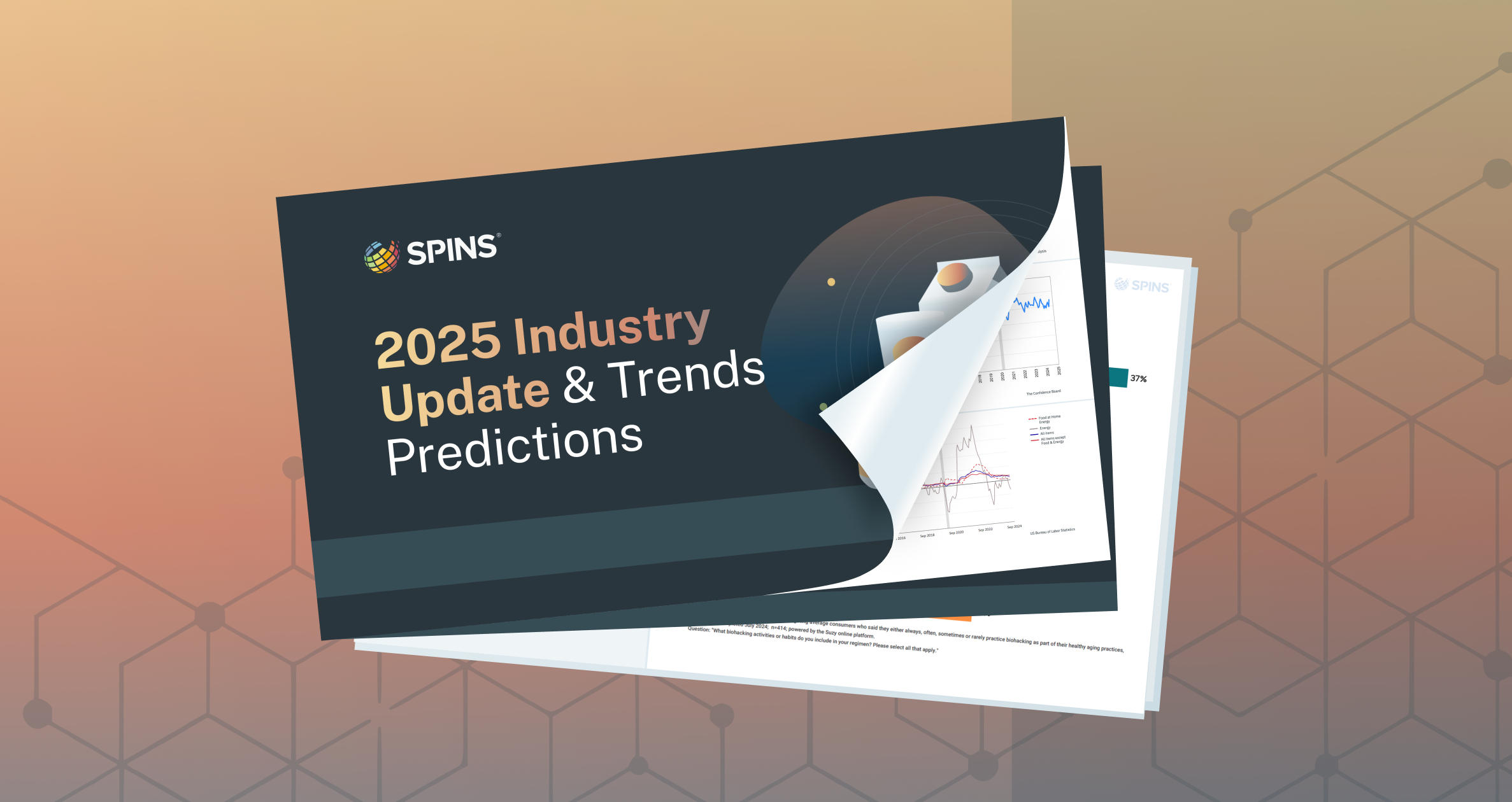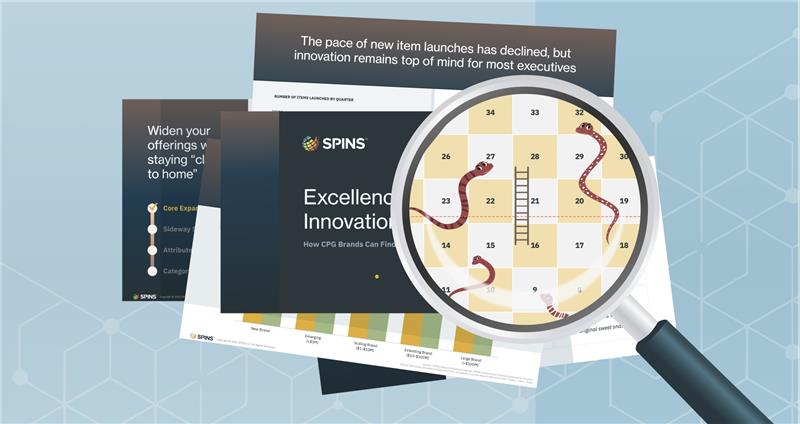As the consumer packaged goods (CPG) industry reflects on 2024 and anticipates the trends of 2025, one thing is clear: the way consumers discover and engage with products is evolving at an unprecedented pace. Scott Dicker, Director of Market Insights at SPINS, sat down with Chief Product Officer Dan Buckstaff to discuss the forces reshaping the industry, from technological advancements to shifting consumer values.
Available Now: 2025 Industry Update & Trends Predictions Report
DownloadThe Transformation of Consumer Discovery
In 2024, the CPG landscape experienced a seismic shift in how consumers discover products. Traditional methods, such as search engines, remain popular among older generations like Boomers. However, younger demographics, particularly Gen Z, are increasingly turning to platforms like Instagram and even AI-powered tools such as ChatGPT to explore and evaluate products. These technologies are transforming the discovery process, blending personalized recommendations with user-generated content like reviews and influencer endorsements.
“Consumers are looking for an ever-broader range of products to meet their needs around health, diet, and values,” Buckstaff observed. “What’s really started to accelerate is how and where they do that. The rise of ChatGPT or other agents to help in the discovery phase is booming.”
This shift presents both opportunities and challenges for brands. As artificial intelligence integrates deeper into everyday life, brands must figure out how to ensure their products are the answers provided by these AI tools.
The Role of Content in Consumer Engagement
At the heart of this transformation is content. Buckstaff emphasized that content creation and distribution are now mission-critical for brands looking to stand out. But creating content is more than just producing appealing images. Today’s consumers demand a deeper understanding of the products they purchase: What’s in them? Where are they made? Are they good for their health, family, or broader community?
Consumers want to know if a product aligns with their personal goals—whether it’s reducing inflammation, adhering to a specific diet, or avoiding allergens according to Buckstaff. This means brands need to provide detailed and transparent data that can follow the product across all digital touchpoints, from e-commerce pages to social media platforms.
Moreover, content now extends beyond traditional marketing materials. Influencer endorsements, customer reviews, and third-party articles all contribute to a product’s narrative. Brands must embrace this expanded definition of content to resonate with modern shoppers.
The Challenge of Distribution
Creating content is only half the battle. Ensuring that it reaches the right audience is equally critical. Buckstaff likened the current moment to the early days of SEO, where the rules for optimizing content for AI-powered discovery are still being written.
For example, the same query in three different AI environments might yield three vastly different results. “It’s both a challenge and an opportunity,” Buckstaff said. “The playing field is wide open, and the adoption curves mirror or are faster than most technologies we’ve seen in the last 10-15 years, It’s a very exciting time.”
What Lies Ahead for 2025
As brands prepare for 2025, the focus will likely remain on creating meaningful, transparent content and leveraging technology to connect with consumers in more personalized and impactful ways.
In this dynamic environment, content is king—but distribution is the critical queen that ensures the right content reaches the right consumer at the right time. As Buckstaff succinctly put it: “The key is to stay agile, embrace innovation, and meet consumers where they are.”
For brands willing to invest in these areas, the future looks bright, promising deeper connections with consumers and sustained growth in an increasingly digital and data-driven world.







